When I started this series, one of the first topics I highlighted was the idea of a logical problem. The idea is this: White has a main plan for achieving his objective. However, if he tries to play it immediately black has a defense that will defeat him. So white must first play a foreplan, whose sole purpose is to neutralize that defense. Once the foreplan has worked itself out, he can go back to executing his main plan.
I love logical problems. When I think of the problems that really get me emotional, at the top of the list are the great logical problems. So, how about we start off the new year with an exceptionally beautiful example of the genre. This was composed by Norman Macleod in 1983. White is to play and mate in eight:
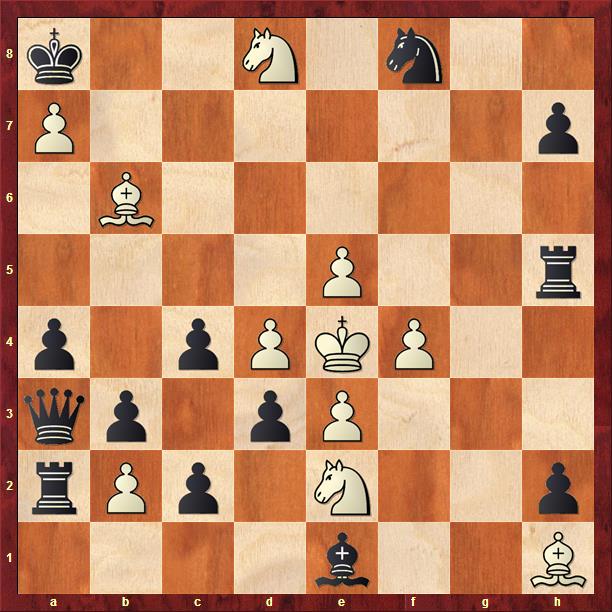
Remember that white is always moving up the board and black is always moving down. So, black's pawn on c2 is poised to promote.
The main idea is not so hard to spot. White wants to move his king off the long diagonal, thereby discovering check from the bishop. The trouble is that it's actually not so easy for white to move his king off the diagonal! Let's try 1. Kd5. This threatens 2. Kxc4. Black can defend with 2. ... Qb4, but after 3. Kc6 the white king will shortly be able to move to c7 or b5. We will actually see this possibility play out at the end of the solution.
So, black's only serious defense is to play 1. ... c1Q, which defends c4. White can renew the threat with 2. Nxc1, but after 2. ... Qxb2:

Black can now interpose at g2. So, white cannot execute this plan without first neutralizing this promotion defense.
The key is to start by moving the king in the opposite direction. 1. Kf3! threatens 2. Kg4. Black's only reasonable defense is 1. ... Rh4, since after 1. ... Rg5 white simply takes the rook with the pawn. White continues 2. Kg2:
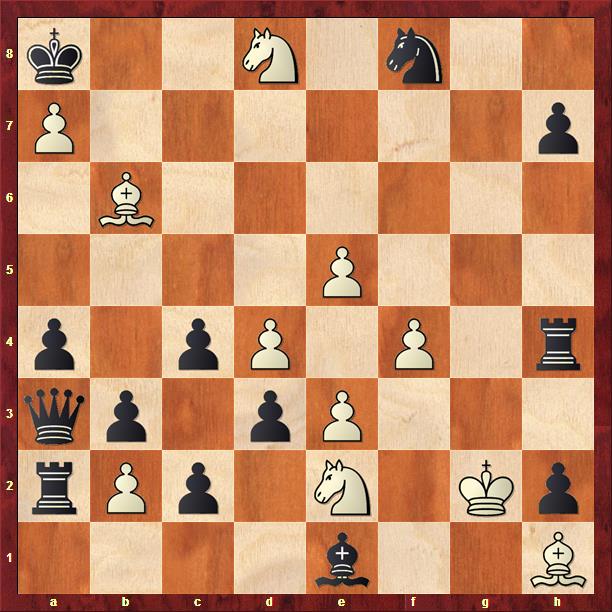
Now the threat is to get the king off the diagonal with 3. Kf1. Black must defend with 2. ... dxe2, but now white has 3. Kf3:
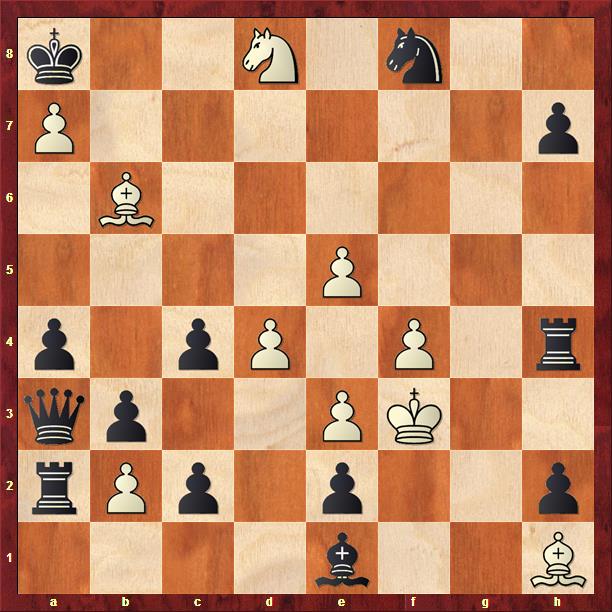
which threatens 4. Kxe2. Black's only defense is the underpromotion 4. ... c1N. But if that pawn has promoted to a knight, then it can no longer promote to a queen! That means white can put his main plan back into action. After 4. Ke4 (which threatens 5. Kf5), black must defend with 4. ... Rh5:

which effectively restores the original position, but with black's queen promotion defense neutralized. Play continues 5. Kd5 Qb4 6. Kc6 Qe7:
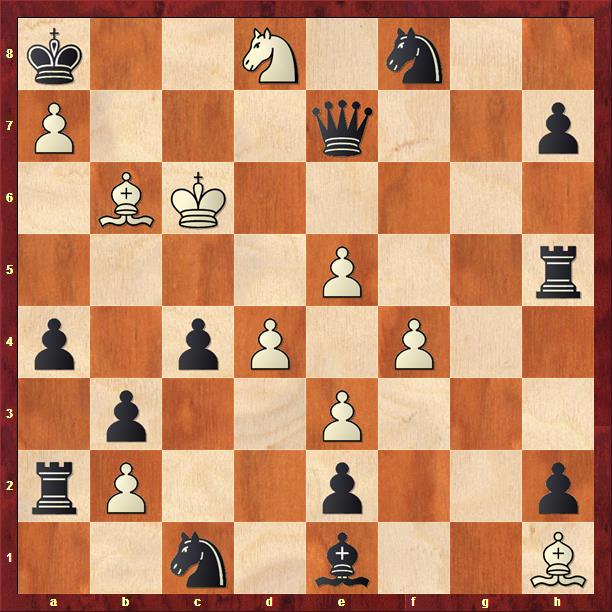
Now for the big finale: 7. Kb5+ Qb7 8. Bxb7 mate:
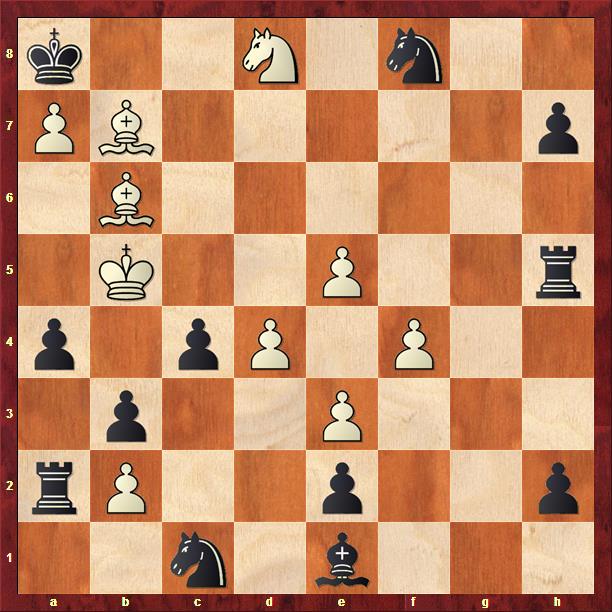
And if that doesn't make you a fan of chess problems then I give up.
See you next week!

Quickie correction: after the third diagram, it's 2...dxe2, not ...exf2.
Quite an enchanting King stroll. I am wondering why the pawn on h7. I'm guessing it is to prevent the rook from sliding back to h7, but I'm not seeing it in any variation.
Bill @2: If there were no pawn on h7, then Black could play 6 ... Rh7 which prevents the White King from leaving the long diagonal. With the pawn there, Black's alternative line is 6 ... Rh6+ 7 Kc7+ Rc6+ 8 Bxc6++, which is still a mate in 8.
Bill--
Thanks for pointing out the error, which I have now corrected. Will I be seeing you in Parsippany this year?